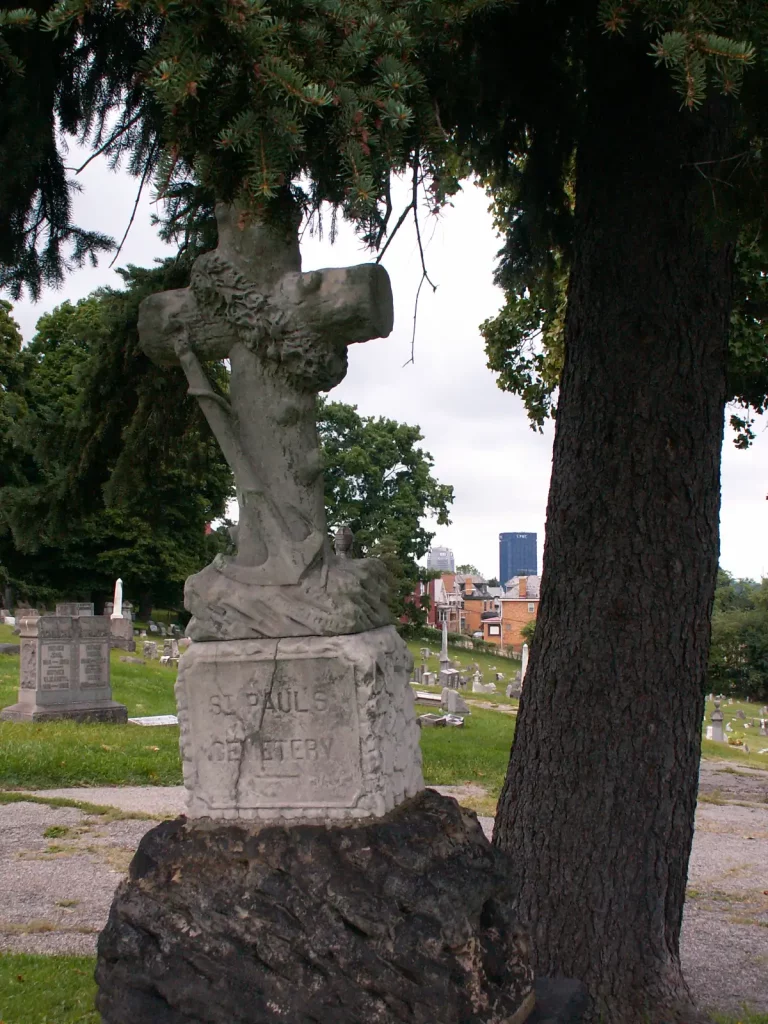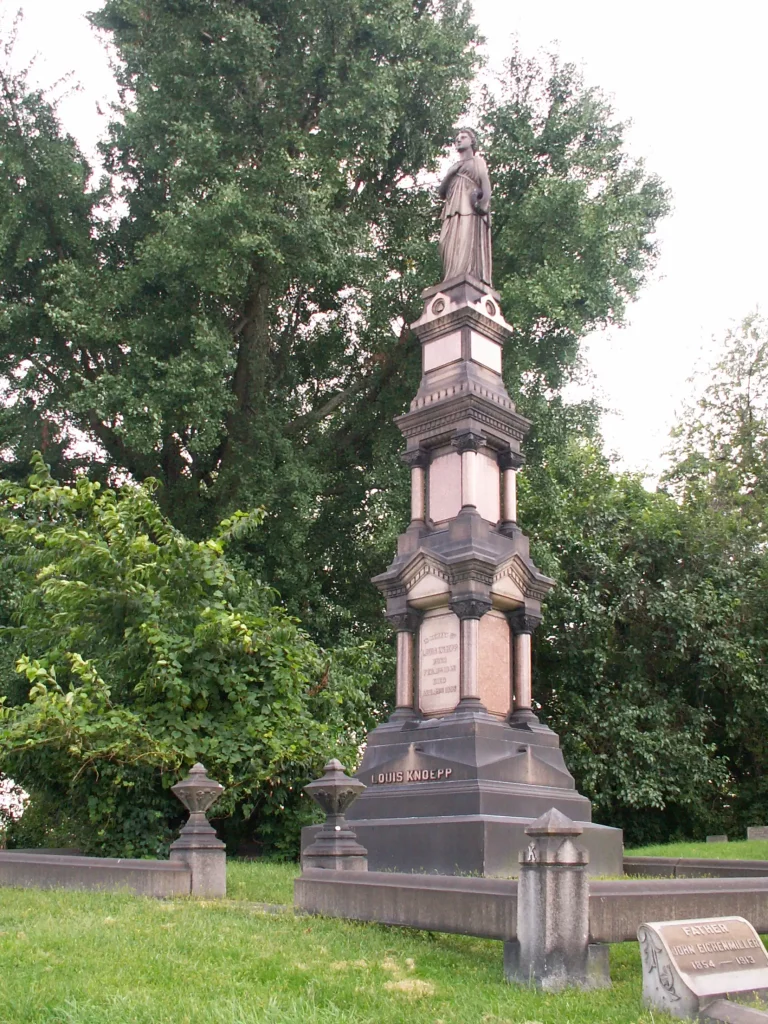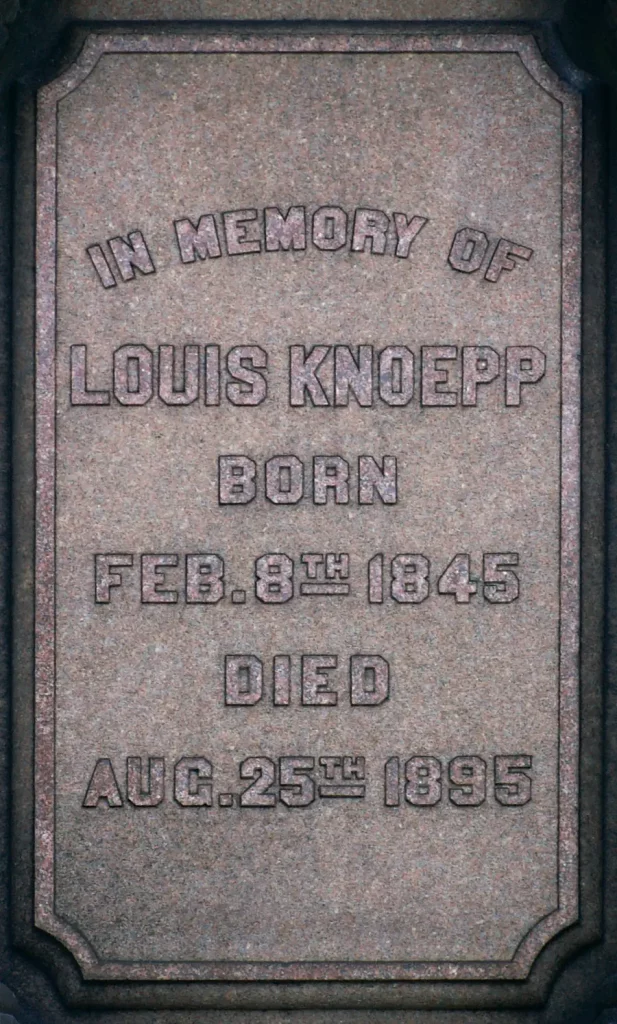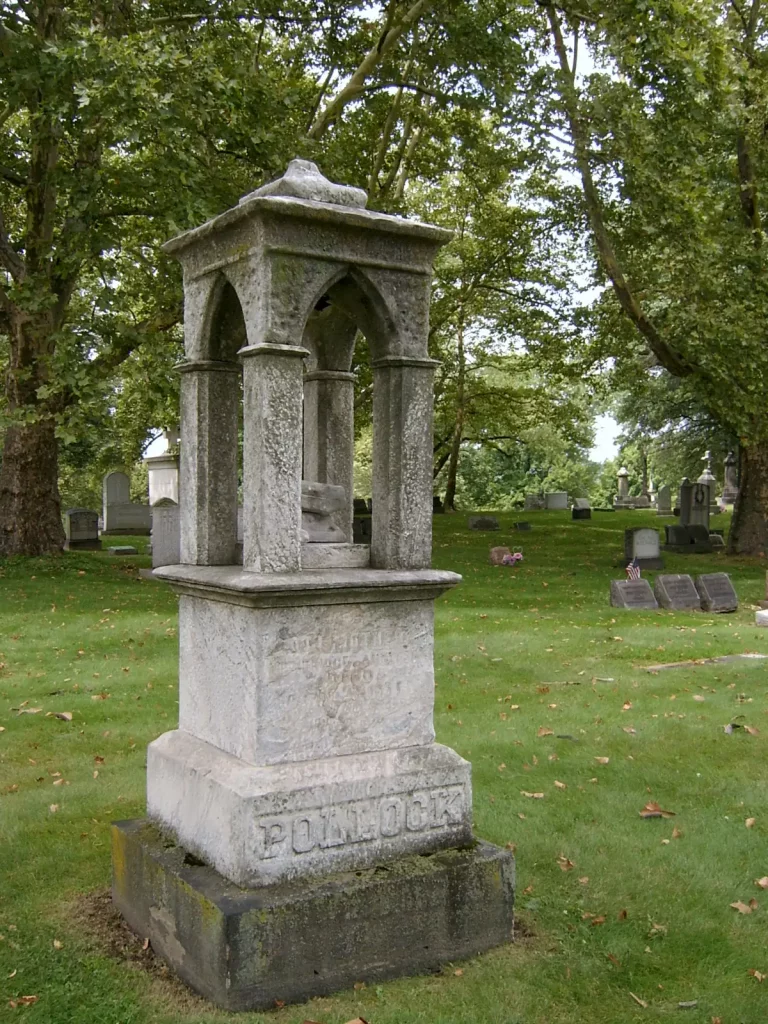
This rather small monument is placed in a curiously obscure location: was it originally nearer the entrance to the cemetery?

This rather small monument is placed in a curiously obscure location: was it originally nearer the entrance to the cemetery?

Either Louis Knoepp made quite a bit of money in a short time (he died at forty), or he had a rich family who remembered him fondly. This monument towers over everything else in this little Lutheran cemetery; in scale it resembles some of the grander monuments in the Allegheny or Union Dale cemeteries. The statue on top, however, is not of the first quality; in fact, its proportions are a bit odd. The head is large and broad, and the neck is unnaturally thick.

The style of the base is a bit hard to describe; it is classical with elements of Gothic.
As if it were not enough to be more magnificent than anything else in the cemetery, the monument is also surrounded by an elegant stone wall to separate Mr. Knoepp from the riffraff around him.


A Gothic shelter for a statue that has disintegrated into unrecognizable bits of stone. The inscription is almost obliterated, but it seems to give a death date of 1851, which is plausible for this style of monument.

This elaborate and delicate Gothic monument is falling to pieces. It once sheltered some sort of statue that is now completely unrecognizable. The base is engraved with the names of two Hills who died in 1920 and 1929, but Father Pitt guesses that the monument dates from the 1870s or before.